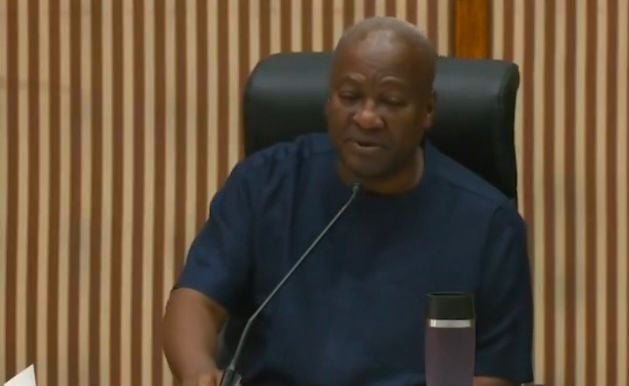Former President John Dramani Mahama has leveled sharp criticism against the Akufo-Addo administration’s Agenda 111 hospital project, alleging widespread dysfunctionality and mismanagement. He contends that despite claims of commissioning, many of the hospitals remain effectively unusable, lacking essential equipment such as beds and other basic amenities. This stark assessment paints a picture of incomplete structures, some still at foundational stages, others barely progressing beyond the lintel level, representing a significant departure from the project’s initial promises. Mr. Mahama estimates a staggering $1.7 billion is needed to bring these projects to completion, highlighting the substantial financial burden inherited by the current administration.
Central to Mr. Mahama’s critique is the perceived inefficiency in the project’s implementation. He questions the decision to construct new hospitals in areas already served by functioning Mission Hospitals. This, he argues, represents a wasteful duplication of resources that could have been better allocated to upgrading existing facilities. He contrasts this approach with his own philosophy of partnering with and strengthening existing Mission Hospitals, thereby maximizing resource utilization and improving healthcare delivery in a more cost-effective manner. This strategic divergence, according to Mr. Mahama, underscores a fundamental flaw in the planning and execution of Agenda 111, leading to unnecessary expenditure and potentially undermining the long-term viability of the healthcare system.
Adding further weight to his criticism, Mr. Mahama highlights the stark contrast between the publicized commissioning of hospitals and the reality on the ground. He points to one particular instance where a supposedly commissioned hospital remains devoid of even basic furnishings, rendering it effectively non-operational. This discrepancy, he suggests, reveals a disconnect between the government’s pronouncements and the actual progress of the project, casting doubt on the veracity of the reported achievements. The lack of essential equipment, such as beds, further reinforces the argument that these hospitals are far from ready to serve the intended population, raising concerns about the government’s commitment to providing adequate healthcare infrastructure.
Faced with this challenging inheritance, Mr. Mahama has proposed a collaborative approach to salvage the Agenda 111 project. He suggests partnering with Mission Hospitals to complete and manage some of the unfinished facilities. This collaborative model, he believes, would leverage the existing expertise and infrastructure of the Mission Hospitals, while easing the financial burden on the government. He envisions a scenario where the government provides financial support for the completion of some hospitals, while others are managed entirely by the missions. This strategic partnership, Mr. Mahama believes, would offer a pragmatic pathway towards realizing the initial goals of Agenda 111 while mitigating the financial and logistical challenges.
The proposed collaboration with Mission Hospitals represents a significant departure from the previous administration’s approach. Mr. Mahama emphasizes his belief in strengthening existing healthcare infrastructure, rather than duplicating services in areas already served by functioning facilities. This approach, he contends, is not only more fiscally responsible but also more likely to result in sustainable improvements in healthcare delivery. By leveraging the established presence and expertise of Mission Hospitals, the government can ensure that these facilities are effectively managed and equipped to serve the needs of the community. This collaborative model, he suggests, is a more pragmatic and efficient way to achieve the ultimate goal of improving healthcare access across the country.
Furthermore, Mr. Mahama’s proposed solution reflects a broader commitment to inclusive governance and partnership. By engaging with Mission Hospitals, the government acknowledges the vital role these institutions play in providing healthcare services, particularly in underserved communities. This collaborative approach fosters a sense of shared responsibility and strengthens the overall healthcare ecosystem. It also allows for a more targeted and effective allocation of resources, ensuring that investments are directed towards areas of greatest need. Ultimately, Mr. Mahama believes that this collaborative approach, underpinned by principles of efficiency and sustainability, offers the best hope for rescuing the Agenda 111 project and delivering on its promise of improved healthcare access for all Ghanaians.


